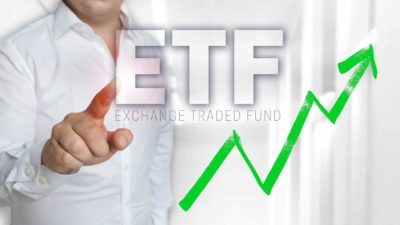Retirees can do well with an investment portfolio focused on providing dividend income. But many ASX exchange-traded funds (ETFs) can provide both retirement income and diversification.
I don't think it would be a terrible choice to go for something like Vanguard Australian Shares Index ETF (ASX: VAS) which offers a fairly good yield but, as I've said before, I think there could be other options that may provide better diversification and growth.
With that in mind, below are three ASX ETFs I'd use to grow my retirement income.
Betashares FTSE 100 ETF (ASX: F100)
The UK stock market is not loved at the moment, with inflation and Brexit hurting market confidence.
However, times of widespread market weakness can be the most opportunistic time to look at an investment.
While the F100 ETF is focused on London-listed businesses, many of the 100 names generate global earnings, such as AstraZeneca, Shell, HSBC, Unilever, BP, Diageo, Glencore, and GSK. These are names operating across a number of countries so it's a diversified portfolio, just not with the names we normally see.
The distribution yield of this ASX ETF was around 3.25% for the last two half-yearly payments.
With 100 names in the portfolio, I think it ticks many of the boxes for retirement income and diversification.
To me, it's more diversified than the VAS ETF because six market sectors have an allocation of more than 10%, with the consumer staples weighting of 19% being the largest.
Australian Ex-20 Portfolio Diversifier ETF (ASX: EX20)
It's the top 20 biggest businesses in the S&P/ASX 200 Index (ASX: XJO) that give the ASX its heavy weighting to a handful of businesses in banking and mining.
If we exclude those biggest 20 companies, the remaining 180 offer considerably more diversification and can still typically provide good income, in my opinion.
Looking at the biggest holdings of the EX20 ETF, we can see a diversified group of businesses such as Brambles Limited (ASX: BXB), South32 Ltd (ASX: S32), James Hardie Industries plc (ASX: JHX), Suncorp Group Ltd (ASX: SUN), Sonic Healthcare Ltd (ASX: SHL), Cochlear Limited (ASX: COH), Northern Star Resources Ltd (ASX: NST), and Scentre Group (ASX: SCG).
According to BetaShares, the gross distribution yield from the ASX ETF over the last 12 months has been 3.8%. That's a solid retirement income yield from a diversified portfolio, in my opinion.
Vaneck Morningstar Wide Moat ETF (ASX: MOAT)
This is a bit of a left-field choice, considering the income distribution for the last 12 months only amounts to a 1% yield.
However, there's more than one way to make retirement income from an ASX ETF.
This portfolio aims to invest in well-priced US businesses with competitive advantages that are almost certainly going endure for at least a decade — and probably last for at least two decades. It's invested in around 50 businesses.
That combination of quality and well-valued holdings has enabled the MOAT ETF to achieve an average return per annum of 15% over the prior three years to 31 May 2023. Although, of course, past performance is not a reliable indicator of future performance.
How does that help us to make a retirement income? We could sell some of our ETF units to then use the cash.
If we had a $100,000 investment in the MOAT ETF and then it climbed 15% over a 12-month period, the units would be worth $115,000. We could sell, for example, $5,000 or $6,000 of that value, achieving a 'yield' of 5% or 6% on the original $100,000.
In an alternative scenario, investors who are five or ten years away from retirement could own the MOAT ETF until retirement, then sell some (or all) of the units of the ASX ETF to invest in ASX dividend shares that would pay a good passive income yield.








